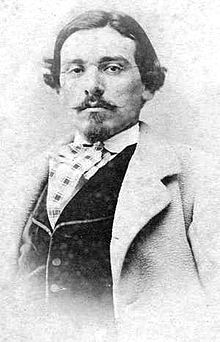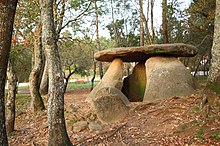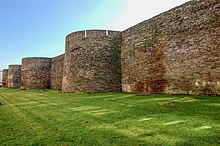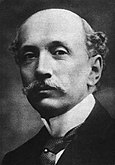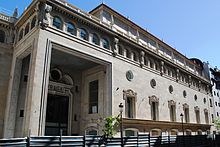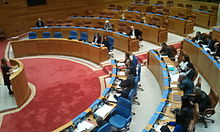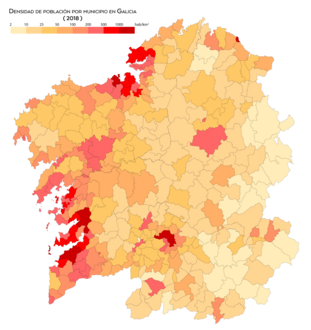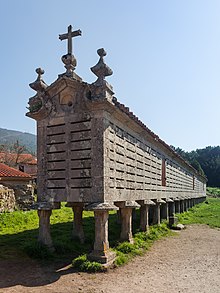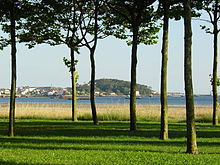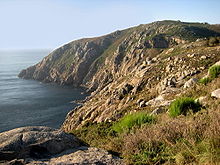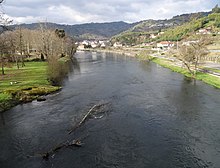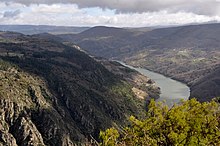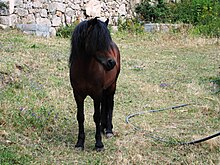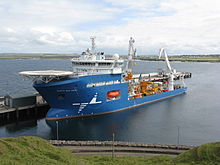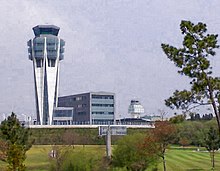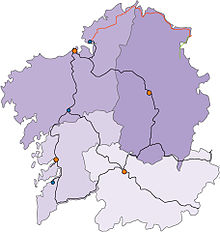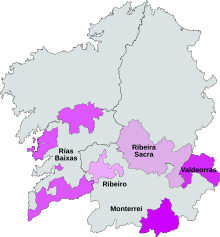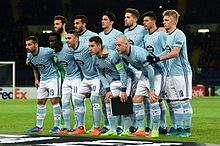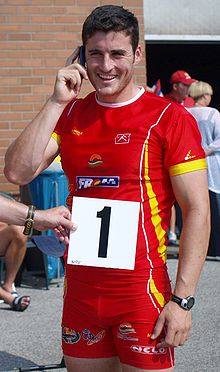Galicia
Galicia is a Spanish autonomous community, considered a historical nationality according to its autonomy statute, located in the northwest of the Iberian Peninsula. It is made up of the provinces of La Coruña, Lugo, Orense and Pontevedra, which are made up of three hundred and thirteen municipalities grouped into fifty-three regions. The capital since the approval of the autonomy statute in 1982, is the city of Santiago de Compostela. Vigo is its municipality with the largest population and La Coruña the most densely populated municipality.
Geographically, it is bathed to the west by the Atlantic Ocean and to the north by the Cantabrian Sea. It limits to the south with Portugal and to the east with Asturias and Castilla y León (provinces of León and Zamora). In addition to the mainland, it includes the archipelagos of the Cíes, Ons and Sálvora islands, the Cortegada, Arosa, Sisargas, Malveiras and other smaller islands.
Galicia has 2,695,645 inhabitants (INE 2021), with a demographic distribution that agglomerates most of the population in the coastal strips between Ferrol and La Coruña in the northwest and between Villagarcía de Arosa, Pontevedra and Vigo in the southwest. Galician and Spanish are spoken in its territory, both co-official according to the Statute of Autonomy of Galicia, Galician being the language of the community.
Etymology
In Antiquity, the Greeks called the northwestern area of the Iberian Peninsula (an area larger than present-day Galicia) kalaikói (καλλαικoί), which was the name by which its inhabitants were known themselves. The place name comes from the name of the Celtic settlers who arrived in two successive waves, the first around the XVIII century B.C. C. and the second around the IV century BC. C. (Hallstatt Celts). The place name evolved to Gallaecia under Roman administration. In the transitional period between the Old Age and the Middle Ages, the area was occasionally called Suevia because this territory was the center in which the invading ethnic groups of the Suevian Germans (or Suavians) settled. In medieval times it was established as an independent kingdom, with the name Reyno de Galicia later forming part of the Kingdom of León, although it maintained its formal character as a kingdom (Reyno de Galicia) the territory of the current autonomous community until the territorial division of 1833, at which time the current Galician provinces were created, and the former kingdoms formally disappeared.
Toponymic variants
The predominant way, both in Galician and Spanish, to refer to this community is Galicia, although there is a version Galiza, used by a minority and in Galician.
The official orthographic and morphological norms of the Galician language accept Galicia and Galiza as legitimate forms. The only official way to designate the autonomous community is Galicia, which is the predominant language in the Galician language, both oral and written.
The place name Galiza was used in medieval Galician together with the place name Galicia. However, the form Galiza fell into disuse during the «Séculos Escuros”, while the form Galicia was the only one that continued to be used uninterruptedly throughout history in the spoken language. XIX century, during the «Rexurdimento» of the Galician language, the use of Galiza by intellectuals and writers.
The name Galiza has been used by a broad sector of Galician nationalism, although there are also sectors that have been using the form Galicia. The use of « Galiza" has been linked to Galicianism, cultural activism, the BNG and, in general, the Galician nationalist left.
Symbols
Anthem
The lyrics of the Galician anthem, Os Pinos, consist of the first two parts of the poem Queixumes dos pinos by Eduardo Pondal, written expressly to become a Galician anthem, and the music was composed by Pascual Veiga, the most important musician in Galicia at that time. The lyrics refer to Galicia as the nation of Breogán, a Celtic mythological hero. It was performed for the first time in Havana (Cuba), on December 20, 1907.
Flag
Although for centuries, the old Galician flag had a blue background with golden crosses, and a ciborium in the center as a shield, the current flag of Galicia was created at the end of the century XIX by the historical Galicians of the Rexurdimento, as a national insignia, waving since the year 1891 at least. It has a white background and a blue stripe from the upper left corner to the bottom right.
Shield
The chalice, a heraldic figure representing Galicia, was documented for the first time on the coat of arms of the kings of Galicia (roys de Galyce) from the Segar Armorial in England in the year 1282. It has experienced different changes throughout history. The current coat of arms of Galicia is described in article number 3 of the Law of Symbols of Galicia:
The coat of arms of Galicia brings, in the field of sugar, a golden chalice added to a silver host, and accompanied by seven crosses cut from the same metal, three on each side and one in the center of the boss. The bell, royal crown, closed, which is a circle of gold, encased of precious stones, composed of eight blossoms of acant leaves, visible five, interpolated of pearls, and of its leaves come up diamond paths added of pearls that converge in a world of azur, with semimeridian and equator of gold, added of a cross of gold. The crown, lined with gules, or red.
History
Prehistory
Paleolithic
The first evidence of human presence in Galicia are stone instruments that date back to 300,000 years ago, in the Lower Paleolithic. From the Paleolithic period, which in this area lasts until approximately 5000 BC. C., there are various sites, such as Camposancos (La Guardia), Gándaras de Budiño (Porriño), Monte del Castro (Vigo) and Pena Grande (Villalba). Also notable are the discoveries in the Portuguese part of the Miño river —from Caminha to Melgazo—, and that of the Eirós cave, located in the municipality of Triacastela (Lugo province), in which Neanderthal animal and lithic remains of up to the Middle Paleolithic, thanks to its basic environment.
Megalithic culture
Own from the Neolithic period (5000 to 2000 BC), it was characterized by its construction and architectural capacity, along with its religious sense, based on the cult of the dead as mediators between human beings and the gods. This religious sense encompasses its importance up to the present.
Society is said to have been organized in a type of clan structure. Thousands of burial mounds spread throughout the territory testify to the megalithic era, generally referred to in Galician as mámoas. Inside these mounds hid a burial chamber of greater or lesser dimensions, built with stone slabs, which is known as a dolmen.
Bronze Age
The Bronze Age takes place in Europe between 2250 B.C. C. and 700 B.C. C. It was in the Bronze Age when metallurgical development was achieved, driven by mineral wealth.
It was a time of production of various gold or bronze utensils and jewelry, which were even taken beyond the Pyrenees. Most of the petroglyphs (inscriptions on granite rocks in the open sky) that are preserved in the Galician mountains, mainly in the province of Pontevedra, also date from this period. Those of Campo Lameiro are well known. Its origin and meaning are still unknown, although it is thought that they were part of some kind of ritual or religious language.
In the last centuries of this era, in what is known as the Atlantic Late Bronze Age, Galicia formed part of a cultural complex of frequent commercial exchanges by sea with other lands on the European Atlantic coast, such as the British Isles, Portugal and Brittany.
Old Age
Castro stage
The castro stage took place approximately between the year 700 B.C. C. and the year 1 of our era. Its greatest development occurs in the second half of the Iron Age, the result of the fusion of the culture of the Bronze Age and other later contributions, coexisting in part with the Roman era.
Some historical studies suggest the arrival of Celtic peoples who brought new varieties of cattle, the domesticated horse and probably rye. These Celts, also called Sefes or Saefes, or even Hallstatt Celts, found themselves in a fairly populated region. According to the most accepted theories, they superimposed on the native population as warrior elites, nobles, and chiefs of tribes, maintaining a status of superiority. or a certain social stratification, as would happen later with the invasions of the Suevi and the Alans.
A 2006 investigation has suggested a Celtic genetic link between the population of the north and northwest of the Iberian Peninsula and those of Brittany, Wales and Ireland.
It is at this time, when the Roman province of Gallaecia (galaicos) was not yet politically and administratively constituted, when the forts appear. These constructions were circular fortified enclosures provided with one or several concentric walls, generally preceded by their corresponding moat and located mostly at the top of hills and mountains.
Among the coastal-type forts, the Fazouro, Santa Tecla, Baroña and O Neixón forts stand out. Inside we can mention the castro de Castromao, Santomé or Villadonga.
As for the temples, the only construction found is that of Elviña. A necropolis is preserved in the Meirás castro. In other castros, cistas (small box-shaped stone constructions) with the ashes of the deceased have been found. There are also other constructions that are partially underground and have a water tank, in which the traces of fire indicate that they must have been used to incinerate the corpses.
The economy of the castreños was based on agriculture, livestock and grazing.
Romanization
The Romans, already settled in most of the Iberian Peninsula (Hispania), arrived in present-day Galicia attracted by the mining resources of the area. The submission to Rome of the Galicians, along with that of the Asturians and Cantabrians, occurred late (23 BC) compared to the rest of the peninsula, largely due to the strong resistance and social and territorial cohesion that characterized to these towns in the Atlantic area.
Three cities, founded by Augustus, headed the three Roman convents or sub-provinces that made up the region: Lucus Augusti (Lugo), Bracara Augusta (Braga) and Asturica Augusta (Astorga). With Diocletian's reform in 298, these convents would be unified under a single province segregated from Tarraconensis: Gallaecia.
With the Romanization, the forts lost their old defensive value, although many of them continued to be inhabited for centuries. The Romans brought new techniques, new means of communication, new ways of organizing property, and a new language, Latin.
Later, Christianity arrived in Galicia, still under Roman rule, gradually replacing paganism. The Catholic Church, with its growing influence in the empire since it became official, had to face in the Gallaecia of the IV century the Priscilianism, a Christian doctrine based on the ideals of austerity and poverty, which had great popular roots and was later condemned as heresy.
Lastly, the arrival of the Suevi in the V century from northern Europe brought an end to the Roman in the region.
Middle Ages
In the early Middle Ages, the Suevi, a Germanic people who followed Arianism, established a dependent kingdom in Gallaecia that they would maintain for one hundred and seventy years.
In the year 585, the Visigoths, who already controlled the rest of the peninsula, consolidated this territory to their kingdom.
Around the year 715, Islam would reach the south of Galicia, which is called Al-Yalalika. His presence there would not last more than a few decades before the advance of the Reconquest. The Galician territory, initially incorporated into the Kingdom of Asturias, soon formed its own political entity known for several centuries as the Kingdom of Galicia, whose crown was shared almost uninterruptedly with the kingdoms of Asturias first and then León. The Galician region located to the south of the Miño river deserves special mention, which in 1139 would become independent under the name of Portugal.
Since the IX century, it is worth noting the cult of the figure of the Apostle Santiago in Santiago de Compostela, which conferred Galicia a key importance within the ideological strengthening of the Iberian Christian kingdoms during the Reconquest, establishing itself as a religious center and destination for pilgrims who strengthened links with Europe. The Camino de Santiago became a cultural axis through which, among others, Romanesque art or the lyric of the troubadours spread.
With these precedents, and after a difficult century X (with violent raids by Vikings and Arabs), Galicia knows in the 11th and 12th a time of splendor in the political, religious and cultural. The construction of several large monasteries (Oseira, Sobrado de los Monjes...), next to the beginning of the Compostela cathedral, dates from this period. This splendor declined from the XIII century when the center of power moved to Castile with Ferdinand III.
The Middle Ages ended in Galicia with the Irmandiña Revolt, an uprising of the popular classes against seigneurial oppression. Although the revolt was finally defeated thanks to the support of the Castilian monarchy, it caused a significant weakening of the feudal lords in favor of monarchical power.
Modern Age
After the unification of the peninsular kingdoms in the Spanish Monarchy, the governing body of the kingdom of Galicia was the Junta do Reyno, created in 1528. Until its dissolution, this body constituted the political expression of the kingdom, although its existence was insignificant throughout the Old Regime. During this period, the demand for voting in the Cortes of Castilla was a constant, since the Kingdom of Galicia was represented in it by the city of Zamora.
At a socioeconomic level, political stability and the beheading of the nobility give rise to three typical features of this period: the prosperity of the fidalgos (who live in the pazos from the collection of the forums to the peasants), the rise of the monasteries, and an unprecedented demographic expansion, supported by the cultivation of corn and potatoes from America.
Economic growth was however interrupted in some periods, as occurred with the Anglo-Spanish War (1585-1604, with episodes such as the Battle of Rande or the siege of Coruña), or the war with Portugal (1640- 1688).
In the cultural field, the creation of the University of Santiago (1495) and the artistic splendor of the Galician Baroque in architecture and sculpture are also two milestones of this period. In contrast, from the normative writing in Spanish begun some time ago by Alfonso X, [citation required] Galician as a language began an accelerated decline within the process of standardization of Spain, going through the so-called séculos escuros (“dark centuries”), in which the survival of the language was only oral.
At the end of the XVIII century it was still known as the «kingdom of Galicia», with, for example, its governors political and military captains general Zermeño or the illustrious Luis de Unzaga y Amézaga «le Conciliateur», one of the architects of the birth of the United States, who was appointed by Carlos III for his diplomatic skills in the face of possible attacks by the English and their Portuguese allies.
Contemporary Age
19th century
After the Napoleonic invasion, the popular guerrillas managed to make Galicia the first Spanish territory liberated from the French army (year 1809). This does not prevent the liberal impulse inherited from the French Revolution from being present throughout the entire XIX century against the policies and values of the Old Regime. Manifestation of this new climate are the Constitution of 1812 and the disappearance of monarchical absolutism after the death of Fernando VII (1833).
The elimination of the seigneurial regime and the ecclesiastical confiscation are two fundamental reforms of the reign of Isabel II. At a social level, we must highlight phenomena in Galicia such as the appearance of local caciquismo (especially in the rural world), the exodus to the cities as a consequence of the Industrial Revolution, and emigration to America from the second half of the century, all this in a context of serious economic backwardness and scant modernization of production techniques.
At the same time, Galicia lost its representativeness as an administrative unit and the Board of the Kingdom of Galicia disappeared (1833). It is here that the current four Galician provinces that structure the territory under the administration of the central government are born. Subsequent reforms that accentuated this centralizing shift incited the emergence of the first political movements that defended Galicia against this loss of power (Carlism, provincialism, federalism, regionalism...). A dramatic episode related to this struggle was the pronouncement of Miguel Solís, who raised part of the army in arms against the authoritarian regime of Narváez. They were defeated in the battle of Cacheiras, on April 23, 1846, and the survivors, known from then on as the Martyrs for Freedom or Martyrs of Carral, were shot.
In the second half of the century, the Rexurdimento represented a culturalist attempt to defend Galicianness after the political attempt, the strengthening of the awareness of cultural differentiation linked to a political ideal. This meant the recovery of the Galician language as a vehicle of social and cultural expression. From this period are writers such as Rosalía de Castro, Manuel Murguía, Manuel Leiras Pulpeiro or Eduardo Pondal, among others.
20th and 21st centuries
After the Galician and liberal movements of the XIX century, the stage of Galician Solidarity arose, from the year 1907 until the First World War, with the aim of achieving a united electoral front to eliminate caciquismo and achieve Galician representation (which ended in failure).
A first stage, up to Primo de Rivera, is marked by the Brotherhoods of Fala, with a fundamental concern for the defense of the Galician language. As it spreads, the political idea of Galicianism takes shape again. Thus, Vicente Risco and Otero Pedrayo worked in the cultural aspect and had a counterpart in the political aspect of Porteira and Lois Peña Novo. The relay was made up of the so-called Xeración Nós, around the magazine of the same name, accompanied from 1920 to the Second Republic by a concern for the creation of a controlled and instrumental Galicianism from the central political power.
In the Second Republic there were two fundamental tendencies: the one corresponding to the Autonomous Galician Republican Organization (ORGA) and the counterpart in the Galeguista Party (PG). The PG arises from the union of several trends represented in figures such as Vicente Risco, Ramón Otero Pedrayo, Ramón Cabanillas, Ramón Suárez Picallo and Castelao. In 1936 the PG, to achieve the statute for Galicia, allied with the Popular Front, and as a result of that alliance suffered a split. However, the Statute was achieved and Castelao presented himself to the Cortes shortly before the Spanish civil war.
- Civil War and Francoism
Galicia was one of the regions, along with Castilla la Vieja, León, Navarra, two thirds of Zaragoza and Cáceres, where the coup d'état that triggered the civil war triumphed. The Francoist repression that followed ended with the parties, the unions and the republican democratic order.
Galicia, which was never a war front, with significant influence of the clergy over depressed rural areas and little resistance to the coup d'état, suffered repression by the insurgents, increasing the number of murdered and executed after summary trials for crimes of "treason" and "help to the repression" to 4,560, of which 836 occurred on the basis of a trial, the rest being extrajudicial. People of all social status or ideology were victims of the repression: the four civil governors at the time of the uprising, the wife of the Governor of La Coruña, Juana Capdevielle, a prominent feminist intellectual who was pregnant at the time of her execution, Galician mayors such as Ángel Casal in Santiago de Compostela, socialists such as Jaime Quintanilla in Ferrol, or Emilio Martínez Garrido in Vigo, representatives of the Popular Front (Antonio Bilbatúa, José Miñones, Díaz Villaamil, Ignacio Seoane, or former deputies such as Heraclio Botana), soldiers who remained loyal to the Republic, such as Generals Rogelio Caridad Pita, Enrique Salcedo Molinuevo, and Rear Admiral Antonio Azarola, or the founders of the Galeguista Party, the Catholic and conservative, Alexandre Bóveda Iglesias and Víctor Casas. In parallel, for many people linked to the Republic with the stage of exile began.
Some movements of the resistant left created small groups of guerrillas with leaders such as El Piloto (José Castro Veiga) or Foucellas (Benigno Andrade), who ended up being arrested and executed.
The Franco dictatorial regime banned parties, ended press freedom and persecuted and "purged" the republican initiatives to modernize the institutions and infrastructures and dignify the Galician language and culture, reducing the latter to simple folkloric manifestations. The autarky of the regime after the Civil War, together with the poor harvests of those years, caused great famines in the 50s. The lack of its own industry meant that the only way out for the Galician population was, as in previous crises, emigration, either to industrial areas of the country, such as the Basque Country and Catalonia, or to South America, highlighting Brazil and Argentina as receiving countries and, from the 1960s, to Western Europe, especially the former Federal Republic of Germany, Switzerland and Holland.
In the 1960s, ministers such as Manuel Fraga Iribarne introduced certain opening-up reforms while Opus Dei technocrats modernized the administration and opened the Spanish economy to capitalism (Spanish economic miracle (1959- 1973)).[citation needed] Galicia, provided raw materials and hydroelectric energy, playing an important role in the industrialization policies of the State that led to the so-called "economic miracle Spanish". Dynamic initiatives appeared, such as the installation of Citroën in Vigo, the modernization of the canning industry and the high-altitude fishing fleet, and an effort by the peasantry to modernize their small farms, focusing especially on the production of bovine milk. In the province of Orense, the businessman and politician Eulogio Gómez Franqueira revitalized the agricultural sector with a cooperative experience that catapulted agri-food production and marketing (Coren).
The seventies entered a phase of university, agrarian and worker agitation. In 1972, there were general strikes in Vigo and Ferrol, industrial centers with abundant union activity. In Ferrol, in a demonstration, the police killed two workers from the Bazán shipyard. About these events, the Bishop of Mondoñedo-Ferrol, Miguel Ángel Araújo Iglesias, wrote a pastoral letter that was not well received by Francoism.
- In democracy
The death of General Franco in 1975 gave way to a process of transition to democracy, in which Galicia regained its status as an autonomous region within Spain with the autonomy statute of 1981. The new political status supposes a compromise between the previous centralist state and a greater degree of independence claimed by nationalist forces such as the Galician Nationalist Bloc (BNG). The new regional government, the Junta de Galicia, has since been led by both the Popular Party of Galicia (with Manuel Fraga as the most notable figure, president between 1990 and 2005), and by the PSdeG-PSOE in coalition with the nationalists of BNG. In 2009 the Popular Party returned to government, in the figure of Alberto Núñez Feijóo.
Political timeline since 1975:
- 1975: constitution of the Democratic Board of Galicia.
- 1976: constitution of the Democratic Table of Galicia.
- 1977: constitution of the Assembly of Parliamentarians of Galicia.
- 1978: Pre-autonomic board chaired by Antonio Rosón Pérez.
- 1979: Pre-autonomic board chaired by José Quiroga Suárez.
- 1980: referendum on the status of autonomy. Approved with reference to historical Nationality.
- 1981: first regional elections.
- 1982: President of the Board of Galicia: Gerardo Fernández Albor.
- 1987: President of the Board of Galicia: Fernando González Laxe.
- 1990: President of the Board of Galicia: Manuel Fraga Iribarne.
- 2005: President of the Board of Galicia: Emilio Pérez Touriño.
- 2009: President of the Board of Galicia: Alberto Núñez Feijóo.
- 2012: President of the Board of Galicia: Alberto Núñez Feijóo.
- 2016: President of the Board of Galicia: Alberto Núñez Feijóo.
- 2020: President of the Board of Galicia: Alberto Núñez Feijóo.
Government and politics
The Powers of the Community
The Statute of Autonomy of Galicia establishes that the powers of the community are exercised through Parliament, the Board and the Presidency:
- The Parliament of Galicia is the highest representative of Galicia, and on which the legislative authority rests. It consists of 75 deputies elected by universal suffrage through proportional representation for a period of four years. The possibility of voting for Galicians residing abroad is guaranteed by law.
- The Board of Galicia is the collegiate body on which the executive and administrative authority of the government rests. It is composed of the president, the vice president and ten counselors (conselleiros). The community exercises its administrative functions through the Board and its entities and dependent bodies. The Board also coordinates the activities of the Provincial Councils.
- The president of the Board directs and coordinates the actions of the Board and holds the representation of the autonomous community and the ordinary of Spain in Galicia. He is a member of the Parliament and is elected by the deputies and appointed by the king of Spain.
Election results
| ← Elections to the Parliament of Galicia 2020 → | |||||||
| Party | Votes | % | Scalls | +/- | |||
|---|---|---|---|---|---|---|---|
| Popular Party of Galicia (PPdeG) | 627 762 | 47.96 | 42 | ||||
| Galego Nationalist Block (BNG) | 311 340 | 23,79 | 19 | ||||
| Partido dos Socialistas de Galicia-PSOE (PSdeG-PSOE) | 253 750 | 19,39 | 14 | ||||
| Galicia in Common–Anova–Mareas (Can–EU–Anova) | 51 630 | 3,94 | 0 | ||||
| Vox (Vox) | 26 797 | 2.05 | |||||
| Citizens-Party of Citizenship (Cs) | 9840 | 0.75 | |||||
| Animalist Party Against Animal Abuse (PACMA) | 6057 | 0.46 | |||||
| Marea Galeguista (EM-CxG-PGD) | 2883 | 0.22 | |||||
| Common-Green-Municipal (R0-ESCO-LV-M) | 1835 | 0.14 | |||||
- Source: Junta de Galicia.
Territorial organization
Provinces
Although historically divided into seven provinces (La Coruña, Santiago, Betanzos, Mondoñedo, Lugo, Orense and Tuy), represented in the coat of arms of Galicia; Currently Galicia is made up of four provinces:
| Province | Population | Surface (km2) | Municipalities | Parties judicial |
|---|---|---|---|---|
| 1 120 134 | 7950 | 93 | 14 | |
| 327 946 | 9856 | 67 | 9 | |
| 306 650 | 7273 | 92 | 9 | |
| 945 408 | 4495 | 61 | 13 |
Councils, municipalities and parishes
Likewise, Galicia also has numerous regions. Each region includes several municipalities that in turn include various parishes. At a local level, present-day Galicia is divided into fifty-three counties, subdivided into three hundred and thirteen municipalities (concellos in Galician), which are subdivided into three thousand seven hundred and seventy-eight parishes. The parish It is the traditional territorial division of the municipalities and each parish comprises one or several population entities, called places. During the year 2016, the metropolitan area of Vigo was legally formed, the only one of its kind in Galicia.
In Galicia there are forty-five judicial districts, of which fourteen belong to the province of La Coruña, nine to Lugo, nine to Orense and thirteen to the province of Pontevedra.
Demographics
According to the 2021 municipal register published by the National Institute of Statistics, Galicia has 2,695,645 registered inhabitants, after losing 6,174 inhabitants compared to the previous year. It is estimated that nearly three million Galicians have emigrated, mostly to the other Spanish autonomous communities, Argentina, Chile, Colombia and Venezuela. There are also important colonies of Galicians in Uruguay, Cuba, Brazil, Mexico and in various European countries (Switzerland, Germany, France, the Netherlands and the United Kingdom were important destinations for Galician emigration in the 1960s and 1970s).
Population distribution
Galicia is the fifth autonomous community in Spain in number of inhabitants and its population density, at 92.35 inhabitants/km², is slightly lower than the Spanish average.
The traditional organization of the population is substantially different from that of the rest of Spain, with the exception of Asturias. Thus, the territory of each municipality was divided into parishes, which in turn comprised several localities. Galicia is characterized by its high rate of demographic dispersion, which, together with a high number of populations, means that 50% of the population entities in Spain are located in Galicia, occupying only 5.8% of the total area. Thus, it is estimated that in Galicia there are a million place names and micro-place names.
The population of Galicia is concentrated mainly in the coastal areas, with the areas of the Rías Bajas and the Gulf of Ártabro (metropolitan areas of La Coruña and Ferrol) being the areas with the highest population density. According to 2018 data from the INE, Vigo is the municipality with the largest number of inhabitants in the entire autonomous community, and La Coruña the most densely populated.
Population by municipalities
Galicia has twenty-three municipalities with more than 20,000 inhabitants, in addition to another eleven with more than 15,000. The twenty-four municipalities with the largest population according to the INE municipal register for 2022 are presented below:
Demographic evolution
The demographic history of Galicia has been one of continuous weight loss compared to the rest of Spain, as a result of emigration to Latin America or other parts of Spain. Thus, in 1857 the population density in Galicia was the highest of all the regions of Spain, and Galicia represented 11.49% of the Spanish population. However, in 2018, only 5.78% of Spaniards resided in this autonomous community.
| Demographic evolution of Galicia and percentage compared to national total | ||||||||||||||||||||
|---|---|---|---|---|---|---|---|---|---|---|---|---|---|---|---|---|---|---|---|---|
| 1857 | 1887 | 1900 | 1910 | 1920 | 1930 | 1940 | 1950 | 1960 | 1970 | |||||||||||
| Population | 1 776 879 | 1 894 558 | 1 980 515 | 2 063 589 | 2 124 244 | 2 230 261 | 2 495 860 | 2 604 200 | 2 602 962 | 2 583 674 | ||||||||||
| Percentage | 11.49 % | 10.79 % | 10.64 % | 10.32 % | 9.93 % | 9.42 % | 9.59 % | 9.26 % | 8.51 % | 7.61 % | ||||||||||
| 1981 | 1991 | 1996 | 2001 | 2005 | 2010 | 2012 | 2014 | 2016 | 2018 | 2019 | ||||||||||
| Population | 2 753 836 | 2 720 445 | 2 742 622 | 2 732 926 | 2 762 198 | 2 797 653 | 2 781 498 | 2 748 695 | 2 718 525 | 2 701 743 | 2.724.643 | |||||||||
| Percentage | 7.30 % | 6.90 % | 6.91 % | 6.65 % | 6.26 % | 5.95 % | 5.88 % | 5.88 % | 5.85 % | 5.78 % | 6.32% | |||||||||
The proportion of foreigners in its census is 2.9%, the lowest percentage in Spain after Extremadura. The national average of registered foreigners is 10.0%, three and a half times more than in Galicia. The predominant foreign colonies are the Portuguese (with 17.93% of the total number of foreigners), the Colombian (10.93%) and Brazil (8.74%). The immigration that has grown the most in recent years is from the American continent, especially the arrival of countries to which many thousands of Galicians left in the past (the case of Argentina, Brazil, Venezuela and Uruguay) and of those who now come descendants of those former emigrants who no longer retain their nationality. To these must be added those coming from Colombia, more numerous, despite the fact that the departures of Galicians to that country in the past were quite modest, and that share the characteristics of the current arrival in Spain with a strong female component (Colombians have already surpassed the Portuguese in absolute numbers) to work in many cases in domestic service. Moderate is the presence of Africans, a collective with a markedly masculine character, who work in construction and in some activities of the tertiary sector and very weak are the troops from other continents.
According to the 2006 census, the fertility level of Galician women was 1.03 children per woman compared to the national 1.38 and less than the figure of 2.1 children per woman necessary for generational replacement to take place of the population. Among the Galicians, the women from Lugo and Orensana are the ones with the fewest children, with 0.88 and 0.93, being the former the ones with the fewest children in Spain.
In 2006, a total of 21,392 births were registered in Galicia, which is almost 300 more than in 2005, according to the Galician Institute of Statistics.
In fact, Galicia is currently experiencing a recovery in the absolute number of births that began in 1999 and has been sustained in recent years. Since 1981 the life expectancy of Galicians has increased by 5 years, thanks to the improvement in the quality of life.
- Birth rate (2013): 7.2 per 1000 (together of Spain: 9.1 per 1000)
- Gross mortality rate (2013): 11.1 per 1000 (in conjunction with Spain: 8.3 per 1000)
- Life expectancy at birth (2013): 82.6 years (in conjunction with Spain: 80.2 years)
- Men: 79.5 years (in conjunction with Spain: 80.0 years)
- Women: 85.6 years (in conjunction with Spain: 85.6 years)
Geography
The territory of Galicia has a total area of 29,574 km². It is between 43º 47' N (Bare Stake) and 41° 49' N (border with Portugal in the Xurés park) in latitude. In longitude, between 6º 42' O (border between Orense and Zamora, specifically in the Winter Station of Trevinca) and 9º 18' O (practically achieved in two places: Cabo de la Nave in Finisterre and Cabo Touriñán).
The geographic center of Galicia is located in a forest in the village of A Vila, parish of Borrajeiros, in the municipality of Golada (Pontevedra). It is obtained as the average of the maximum and minimum values of latitude and longitude:
- North 43,7924041112 Bars Stack (La Coruña)
- South 41,8072541522 Feces de Abaixo (Orense)
- This -6,734324529 Trevinca Winter Station (Orense)
- West -9,29885967 Cape of the Ship (La Coruña)
Relief
In Galician geography, the contrast between the coastal relief and the inland relief stands out, higher than the former. There is also a contrast in morphology between the northern high plains and the southern ranges and depressions.
The orographic aspect that Galicia presents in its interior is of low and blunt mountains, with a multitude of rivers, structured as tributaries of the Miño river in the interior, and in the Atlantic and Cantabrian basins, shorter rivers (particularly those that They go to the Cantabrian Sea). Gentle slopes sometimes give way to rugged slopes, as occurs in the Sil canyons. In other areas there are wide valleys, although they are in the minority.
The Galician coast is 1,500 kilometers long and is characterized by the presence of estuaries. The estuaries are traditionally divided into Rías Altas (Rías Altas, Foz, Vivero, Barquero, Ortigueira, Cedeira, Ferrol, Betanzos, La Coruña, Corme y Lage and Camariñas) and the larger Rías Bajas, located to the south of Finisterre as the most Western Galicia (Corcubión, Muros y Noya, Arosa, Pontevedra and Vigo). Between the Rías Altas there is a continuous division between the so-called Rías Altas (to the east of Estaca de Bares) and the Rías Medias.
The estuaries stand out for their important contribution to fishing in Galicia, contributing to the Galician coast being one of the most important fishing areas in the world. The erosion of the Atlantic Ocean on the Galician coast also contributed to the presence of a multitude of capes, including Estaca de Bares (the northernmost point of Galicia and the separation between the Atlantic Ocean and the Cantabrian Sea), Cape Ortegal, Cape Prior, Punta Santo Adrao, Cape Vilán, Cape Touriñán (the westernmost point of Galicia), Cape Finisterre, considered by the Romans to be the end of the known world, and Cape Silleiro, which closes the Vigo estuary to the south.
Along the Galician coast there are a large number of archipelagos closing off the estuaries that stand out both for their seabeds and for their colonies of seabirds. It is estimated that there are 316 archipelagos, islets and rocks on the coast of Galicia, according to an inventory carried out in 2007. The main groups of islands are the Cíes, Ons, Sálvora archipelagos as well as the Cortegada islands (together with three previous archipelagos form the national park of the Atlantic Islands of Galicia), Arosa, Sisargas and Malveiras.
The Galician orographic aspect in its interior is of low and blunt mountains. The gentle slopes sometimes give way to rugged slopes, as happens in the Sil river canyons. In other areas there are wide valleys, although they are in the minority.
Galicia is crossed from north to southeast by two tectonic faults, splitting the characteristics of the Galician soil in those places. One of these faults forms the rectilinear step found on the southwestern Galician coast between Cabo Silleiro and the mouth of the Miño, where triangular facets can be seen that clearly mark the coastal separation between the continent and the sea. On the other hand, the thermal springs present in various parts of Galicia (for example, in Ourense) mark the route of the faults that cross the Galician territory. Thus, granite quarries are found in the Porriño area, a very abundant rock in a good part of Galicia, but absent in the extreme northeast, which can be seen in the dominant architecture: defensive constructions (castros, walls), bridges and both civil and religious works traditionally used granite blocks in most of Galicia, while other construction materials have been used in the northeast, as can be seen in the Roman wall of Lugo, built with slate slabs. The main mountain ranges in Galicia are the sierras of Gistral (north of Lugo), Ancares (border with León and Asturias), del Caurel (border with León), del Eje (border between Orense and Zamora; at 2124 meters is Peña Trevinca, the roof of Galicia), Manzaneda (heart of the province of Ourense), del Faro (border between Lugo and Pontevedra), Cova de la Serpiente (border Lugo and La Coruña), Montemayor (province of La Coruña), Montes del Testeiro (between Pontevedra and Orense), A Peneda, and those of Baja Limia-Sierra de O Xurés and Larouco (border between Ourense and Portugal).
The main peaks in Galicia are Peña Trevinca (2127 m), Peña Negra (2121 m), Peña Surbia (2095 m) (the first three are in the Sierra del Eje, Peña Trevinca Massif), Alto del Torno (1944 m) (Sierra Segundeira, Massif of Peña Trevinca), Mustallar (1935 m) (Sierra de Ancares), Maluro (1925 m) (Massif of Peña Trevinca), Penalonga (1896 m), Lagos (1867 m), Cursed Horn (1,858 m), Peña Rubia (1,822 m), Tres Obispos (1,798 m) (these five located in the Sierra de Ancares) and Cabeza de Manzaneda (1,778 m).
Hydrography
Galicia maintains a good number of river courses. In general, and due to their small size, except for the Miño at its mouth or in the many reservoirs, the rivers are not navigable (an exception is made for small boats in the final stretch without slope of some, which favors the celebration of semi-aquatic festivals such as called "zaleas").
Linked to its hydrography, the Tierras del Miño Biosphere Reserve stands out, which extends through the upper basin of the Miño river, in the province of Lugo and includes the territories belonging to the municipalities of Orol, Valle de Oro, Muras, Alfoz, Mondoñedo, Abadín, Germade, Villalba, Pastoriza, Riotorto, Guitiriz, Cospeito, Meira, Begonte, Rábade, Castro de Rey, Otero de Rey, Pol, Lugo, Friol, Castroverde, Guntín, Corgo, Baralla, Páramo and Láncara.
These are very short rivers on the Cantabrian slope and somewhat longer on the Atlantic, with the exceptions again of the Miño and the Sil, which are several hundred kilometers long.
In Galicia there are many reservoirs for the production of electrical energy, due to the flow, slope and narrowness, which also produces the phenomenon of canyons, such as the famous Sil canyons (many of them used for reservoirs).
Climate
In general, Galicia has a mild climate similar to other areas of the Atlantic framework such as French Brittany or the center-south of Ireland, all of which have an oceanic influence. Even so, the irregular orography results in the existence of multiple microclimates, with strong variations in areas with just over 200 km².
Broadly speaking, the following areas can be distinguished:
- The Rías Altas and the interior of the province of La Coruña, with a humid oceanic climate. It records the highest rate of precipitation in Galicia.
- The Mariña looks, with a mild oceanic climate with low temperatures all year round.
- The interior, with an almost continental ocean climate.
- The Lower Rías, with a mild oceanic climate.
- The border course of the Miño River, with a climate very close to the mild Mediterranean.
- The Ribeira Sacra, with a very warm continental climate propitiated by the valley of the Miño River and the various mountains surrounding the city of Orense. In the summer, records are followed with temperatures between the maximums of the entire Iberian peninsula, which reach over 40 °C.
Galician territory has a weighted average annual temperature of 13.3 °C. During winter the average temperature reaches 8.5 °C, in spring it reaches 15 °C, in summer at 19 °C and during the autumn at 11 °C. It is, therefore, in the first third of the year (months from January to March) when the lowest temperature values are given for most of Galicia. It is in the Atlantic area of Galicia – provinces of La Coruña and Pontevedra – where the highest average annual temperatures are recorded, slightly exceeding 14 °C and being 1 to 2 °C higher than those of Lugo and Orense, respectively. The normalized mean values range from minimums below 6 °C in the mountains of the eastern and southeastern sierras (Ancares and Sierra del Eje), to maximums above 15 °C in low-altitude coastal areas, especially in the Lower estuaries. The spatial distribution of temperatures presents a coast-inland variation, related to the presence of the Atlantic Ocean –which has a thermal regulating effect in coastal areas and even in more inland areas–. Together, they mark a diagonal northwest-southeast effect of temperature decrease, that is, a line could be drawn from Tuy to Ribadeo that would differ from the main climatic zones in Galicia, one with milder temperatures (the coast) and another with more continental temperatures (inland).
Flora
Galicia has a large percentage of forest (68.96%) and forest, making it one of the communities with the largest forest mass. In 2008 it was estimated that more than 600 million trees covered the Galician surface, being valued at 28,000 million euros. However, it was also estimated that most of the forests remained abandoned, being full of undergrowth. Galician forests develop important forest species in their natural state, it is seen in recent decades that the forest characteristics are changing due to the importation of eucalyptus, leaving a reduced number of fragas, particularly in the center-north of the province of Lugo and the north of the province of La Coruña (Fragas del Eume).
Within the use of the land, various crops were introduced, but regarding the amount of dedicated land they compete with pastures due to the pressure of the economic use of livestock.
Galicia is a strong power of forest wealth for Spain. Despite the forest fires that burn many hectares every year, the wood produced in Galicia is an important source of income, as is the pulp from softwoods. The region is a transition zone between three climates and their biotopes:
- Atlantic, with oak forests, birch trees, common alders, etc.;
- Mediterranean, mainly in the inner valleys of the large rivers, with significant elements such as steppes, cork, arbutus, etc.;
- rather softened continental, with punctual elements such as lice, acebos, some bees (aloccers), red pines, etc.;
Due to the good climate and the high levels of rainfall and humidity, subtropical and even tropical species also easily grow: palm trees, orchids, etc. In Galicia there were three botanical or forestry revolutions, which occurred at three different times and with very different results:
- arrival of the European chestnut (Castanea sativa) with the Romans, quickly acclimatized and now considered as indigenous;
- arrival of the repopulations of Pino Rodeno (Pinus pinaster) with the time called even pine of Galicia or Pino gallegosince the discovery of America, especially for the construction of ships;
- arrival of eucalyptus repopulations (especially Eucalyptus globulus), from the Francoism, still contemplated as an alloctane species, mainly to supply from raw material to ENCE, the Trashvedra bin.
Wildlife
There are 262 inventoried vertebrate species in Galicia, of which 12 are freshwater fish, 15 amphibians, 24 reptiles, 152 birds and 59 mammals.
The animals that are topically seen as most characteristic of Galicia are domestic, and correspond to livestock farms. However, the Galician forests and mountains are home to a variety of small mammals (hares, rabbits) and other larger ones (such as wild boar or roe deer) that are used during hunting seasons.
Among the birds, it is worth mentioning the various transit or wintering sites, ZEPA zones, etc., such as the Ortigueira estuary, a Galician wetland included in the Ramsar agreement, or the Ribadeo estuary.
It is worth mentioning the native Galician horse breed (pure-bred Galician horse), and the native Mos hen, which is in danger of extinction, although the number of specimens has increased in recent years.
Economy
Traditionally, most of Galicia's economy has depended on agriculture and fishing, although today there are more workers in the tertiary sector: 582,000 people out of a total of 1,072,000 (2002).
Within the secondary sector, it is worth noting shipbuilding in Vigo and Ferrol, the automobile industry in Vigo and the textile industry in La Coruña, as well as the industry related to the handling of granite in Porriño. In the automotive industry, it is worth noting the Vigo Center of PSA Peugeot Citroën, which has been in operation since 1958. In 2006 it manufactured 455,430 vehicles, being 7% more compared to 2005, and in 2007 it manufactured 9,000,000 vehicles since which began its operation in 1958, a Citroën C4 Picasso. The Vigo area also stands out in the agri-food sector (especially in the industry related to the sea: canning, frozen fish and pre-cooked foods) highlighting multinationals such as Pescanova, in the textile sector (with companies such as Selmark, El Secreto del Mar or Umbro Spain), in the financial area, the chemical-pharmaceutical sector (with Zeltia at the helm), shipyards (MetalShips & Docks, C.N.P. Freire, Vulcano, Rodman Polyships, Armón or Hijos de J. Barreras) and other productive sectors.
In Arteijo, a municipality in the metropolitan area of La Coruña, Inditex is headquartered, a company that encompasses eight brands, among which Zara stands out —which is also the most internationally known Spanish brand. In 2007, the textile company had a turnover of 9,435 million euros and obtained a net profit of 1,250 million euros.
Galicia also has a financial institution: Abanca.
Tourism in Galicia, which developed later than in other areas of the peninsula, today represents an important source of income, with the peculiarity that it is concentrated on the coast (mainly in the Rías Bajas), in Vigo, in La Coruña and Santiago de Compostela. During the year 2007, Galicia received 5.7 million tourists, 8% more than in 2006, it is 11% more than in 2005 and 2004. 85% of the tourists who visit Galicia visit Santiago de Compostela, which is one of the main Galician tourist attractions. Tourism accounts for 12 percent of the Galician Gross Domestic Product (GDP) and employs 12 or 13 percent of the workers.
Energy
Net generation in 2005 reached 25,097 GWh, of which 17,216 were obtained from ordinary regime generation activities while 8,644 came from special regime generation activities. This amount accounted for 9.33% of the totally spanish. In that same year, the demand in the Galician community amounted to 18,622 GWh.
The main sources of generation are processed solid fuels transformed mainly at the Meirama and Puentes thermal power plants. The latter is the largest thermal power plant in Spain with a capacity of 1,468 MW distributed in four groups.
The growth of installed capacity under the special regime in 2005 compared to the previous year was 10.2%. Within this group, renewable energies are in a stage of great growth, highlighting wind energy, which in 2005 accounted for 83.1% of the total installed capacity of renewable energies, and which in 2009 placed the community in the third national position with 3,137 MW of installed power. An expansion of thermoelectric solar energy is expected in the coming years, as well as wave energy.
Infrastructures and services
Education
- Universities
In Galicia there are three public universities and one private. Among the public universities, the oldest of all is the University of Santiago de Compostela, founded in 1495 and which currently has campuses in Santiago and Lugo. In 1989 the University of La Coruña was founded, which has campuses in La Coruña and Ferrol, and in 1990 the University of Vigo was founded, with campuses in Vigo, Orense and Pontevedra. The only private university in Galicia is the Universidad Intercontinental de la Empresa, founded in 2021 in Santiago de Compostela.
Science and technology
Transportation
Airports
In Galicia there are three airports located on the Atlantic axis, within a radius of 70 kilometers, all of them managed by the Aena company:
- The airport of Santiago de Compostela-Rosalía de Castro (formerly and also known as Lavacolla), with a traffic of 3.2 million passengers in 2022 is the most important of Galicia and the second of northern Spain. Connects with the main cities and islands of Spain. It also offers flights to ten countries in Europe.
- La Coruña Airport (Alvedro), with 963 957 passengers in 2022, has direct flights to several cities in Spain, as well as to Paris, London and other European cities.
- Vigo Airport (Peinador), with 953 261 passengers in 2022, has direct flights to several cities in Spain, as well as to London.
Ports
Among the Galician ports, it is worth noting the port of Vigo, with a total traffic in 2004 of 4,730,399 tons, and that of La Coruña, which is the second largest fishing port in the world and also receives coal, zinc, wood, sand, cereals, cement, alumina, aluminum, cement, plaster, gasoline, oil, gas and to a lesser extent containers and ferries.
Other notable ports are those of Ferrol, which is one of the bases of the Spanish Navy, as well as those of Marín, Villagarcía de Arosa and Burela.
In Galicia there are also another 122 ports managed by the public entity Portos de Galicia.
Road network
Galicia has an extensive network of motorways, highways, high-capacity roads and highways that connect the main cities and towns of the region, structuring the entire territory. Among all of them, the following stand out:
- The AP-9, which vertebra Galicia from north to south and passes through five of the seven large Galician cities: Ferrol, La Coruña, Santiago de Compostela, Pontevedra and Vigo.
- La A-8, access to Galicia from Asturias and the rest of the Canarian coast, unites Ribadeo and Baamonde, although in the future it is planned to continue to Santiago de Compostela.
- La A-6, which unites La Coruña and Lugo with Castilla y León and Madrid entering the Cebrero.
- The A-52, which unites Vigo and Orense with Castile and Leon, entered La Gudiña.
- The AP-53, between Santiago and Orense.
- The A-54, between Santiago and Lugo.
A project is being drafted for the construction of a fourth highway to enter the community, the A-76, through Valdeorras, following a route similar to that of the current N-120 between Ponferrada and Orense. The A-56 between Lugo and Orense is also in the pipeline, of which a small section has already been inaugurated. All the previously mentioned routes have their corresponding road alternative.
Railway
On September 15, 1873, the first railway in Galicia between Carril (Villagarcía) and Cornes (Santiago) was inaugurated. In 1875 the second line was inaugurated, linking La Coruña and Lugo. connects Galicia with the rest of Spain, through El Barco de Valdeorras.
The railway network in Galicia is around 1100 km, all of it owned by Adif (or Adif Alta Velocidad) and operated by Renfe Operadora (through its different commercial divisions). There are several lines of Iberian gauge (1668 mm) that connect all the Galician cities. There is also a metric gauge line (1000 mm) corresponding to the Ferrol-Ribadeo-Gijón route that was fully completed in 1971, after nearly a century of projects and advances. Of all these lines, the only ones that are electrified are the one that enters through Ponferrada towards Monforte, Orense and Vigo, the Orense-Santiago-La Coruña high-speed line and the Olmedo-Zamora-Galicia high-speed line, completed in 2021.
Culture
Languages
The two official languages of Galicia are Galician and Spanish. 94.4% of the population knows how to speak Spanish and 83.1% in Galician according to 2021 data from the INE.
Over the years the use of Galician has declined in urban areas due to the influence of Spanish. Even so, 83% of the population is able to speak Galician, according to a survey carried out by the INE in 2021. It is the most widely spoken language among the historical nationalities of Spain. There are figures that indicate that 20% of young people between the ages of 14 and 19 are functionally illiterate in Galician.
On May 25, 2010, Decree 79/2010, of May 20, for multilingualism in non-university education in Galicia, was published in the Official Gazette of Galicia, in which the it adjusts the distribution of subjects that had to be taught in Galician until then, balancing it with that which must be taught in Spanish. The decree was the subject of numerous protests even before its approval (according to some data, 90% of the teachers' unions did not support it, and 100% of the student associations opposed it, as well as the federation of ANPAs and movements of pedagogical renewal).
Galician
Galician is recognized as Galicia's own language in its statute, and has a common trunk with Portuguese (Galaico-Portuguese). Portuguese independence in the Middle Ages favored the evolution of Portuguese and Galician into different languages, already differentiated in the XV century. A minority linguistic movement, reintegrationism, maintains that Galician and Portuguese are only different varieties of the same Galician-Portuguese language and that the current separation of the Portuguese regulations and the official Galician regulations is only due to the normative Castilianization of Galician (the only Galician-Portuguese variety with spelling similar to that of Castilian).
Recently, the oldest preserved document written in Galician has been found, dating from the year 1228, it is the "Fuero de Castro Caldelas" (Foro do bo burgo do Castro Caldelas) Granted by Alfonso IX in April of that year to the town of Allariz in Ourense.
Galician has a standard drawn up by the Royal Galician Academy based on its literary tradition. Contemporary Galician, as an official language, has a cultured variant that is used both in the Galician media and in primary, secondary and university education. Galician is spoken by more than three million people around the world, with 95% intelligibility with Portuguese. In relation to the number of speakers, Galician ranks 146th in the world list, in which they are included more than 6700 languages.
Literature
The first literary manifestations in Galician-Portuguese date from the Middle Ages, as is the case with most of the Romance languages. From the literary tradition of this period, known as Galician-Portuguese lyric and collected in various cancioneiros, it is worth noting poets such as Bernardo de Bonaval, Airas Nunes, Pedro da Ponte, Pero Amigo, Martín Codax and the Portuguese king Don Dinis. The literary use of Galician-Portuguese was not limited to the west of the Iberian Peninsula, but was also widely cultivated in the kingdoms of Castilla and León. King Alfonso X the Wise, of Castile, composed his Cantigas de Santa María and several cantigas de Escarnio e Maldizer in Galician-Portuguese.
After this medieval stage, there was a period of three centuries –known as seculos escuros or dark centuries– in which Galician was almost totally abandoned as a literary language. With the Rexurdimento, from the beginning of the XIX century, and coinciding with the cultural current of Romanticism and As a result of a national awareness, literature in Galician was once again cultivated, with Rosalía de Castro, Eduardo Pondal, Curros Enríquez and Manuel Murguía emerging as fundamental figures.
Already in the XX century, before the Civil War, groups of intellectuals such as the Xeración Nós and the Irmandades da Fala, in which writers such as Vicente Risco, Ramón Cabanillas and Castelao can be found. Then, two more periods can be delimited that would coincide, approximately, one with the Franco regime and the other with the period that goes up to the present, since the advent of democracy in Spain. Famous authors of contemporary Galician literature are Xosé Luís Méndez Ferrín, Manuel Rivas, Suso de Toro or Carlos Casares.
As for the literature written by Galician authors in the Spanish language, there are several great figures. Thus, one of the key authors of Spanish literature of the XX century is the Galician Ramón María del Valle-Inclán. He was a Spanish playwright, poet and novelist, who was part of the literary current called modernism in Spain and is close, in his latest works, to the so-called generation of '98. He is considered the father of the literary current of « grotesque». On the other hand, Camilo José Cela was a member of the Royal Spanish Academy and was awarded, among others, the Prince of Asturias Award for Literature in 1987, the Nobel Prize for Literature in 1989 and the Cervantes Award in 1995. For his literary merits, In 1996, King Juan Carlos I granted him the Marquisate of Iria Flavia, created expressly. His works include The Family of Pascual Duarte and The Beehive .
Another notable figure of Spanish literature from Galicia was Emilia Pardo Bazán. She belongs to a Galician noble family, she was a Spanish novelist, journalist, essayist and literary critic who introduced naturalism in Spain. Her most recognized work is Los pazos de Ulloa . Within Spanish literary realism, it is the novel that best exemplifies the naturalist current, reflecting the acceptance of positivist theories applied to literature by the French writer and father of naturalism Émile Zola. Another Galician woman among the great names in Spanish literature is Concepción Arenal, an important realist writer linked to the pioneering feminist movement at the end of the XIXth century.
The Spanish diplomat, writer, historian and pacifist Salvador de Madariaga also stands out. During the Second Spanish Republic he was Minister of Public Instruction and Fine Arts, and was one of the co-founders, in 1949, of the College of Europe. In addition to his important work as a publicist, he published notable essays on the history of Spain and his role in the world.
Ramón Menéndez Pidal was a Spanish philologist, historian, folklorist and medievalist. Creator of the Spanish philological school, he was an erudite member of the generation of '98.
Benito Jerónimo Feijoo y Montenegro was an essayist and polygrapher who, together with the Valencian Gregorio Mayans, constitutes the most outstanding figure of the first Spanish Enlightenment.
Art
The first artistic or symbolic manifestations preserved in the northwest of the peninsula correspond to the Stone Age, and include funerary structures known as dolmens, and numerous petroglyphs. Subsequently, the culture of the castros – fortified towns from the Iron Age would leave a rich Celtic-Galaic legacy of jewelery and gold objects (torques, earrings, bracelets...), among other items. Also stone sculptures of warriors or animals.
Important monuments of internationally recognized value have been preserved from Roman times, such as the wall of Lugo, the Tower of Hercules in La Coruña (both World Heritage Sites), or the Roman Bridge in Orense. Some mosaics, sculptures, funerary stelae and votive altars have also reached our days.
The Middle Ages began with the presence of the Swabians and Visigoths, who left examples of ecclesiastical architecture among which the churches of Celanova and Santa Comba de Bande stand out, along with monasteries such as San Julián de Samos. It is however between the XI and XIII when there was a huge building boom in Galicia, in the Romanesque style, which gave rise to the five Galician cathedrals, including the Cathedral of Santiago, one of the main monuments in Europe at the time and the final goal of the pilgrimage route that brought her into contact with European culture. Several monasteries (Sobrado, Oseira...) and hundreds of churches spread throughout the four provinces are also from this period, as well as some of the characteristic cruceiros that abound in the rural landscape. In the field of sculpture, it is worth noting the figure of Master Mateo, author in the XII century of the Portico of Glory of the Cathedral of Santiago, masterpiece of Romanesque sculpture.
Reforms and extensions in later centuries meant that some of the aforementioned Romanesque buildings incorporated elements of the Gothic (Tuy Cathedral), Baroque (facade of the Santiago de Compostela Cathedral) or Neoclassical (Lugo Cathedral) styles.
At the beginning of the modern era, the Renaissance left buildings such as the Basilica of Santa María la Mayor in Pontevedra capital, the Colegio del Cardenal in Monforte de Lemos and the Hostal de los Reyes Católicos in Compostela, as well as Mannerist painting. Subsequently, the Baroque brought a new period of splendor to Galician art in the XVII and XVIII. It is worth noting the Obradoiro façade of the Santiago de Compostela Cathedral and the San Martín Pinario Monastery, as well as numerous altarpieces (the one of San Martín Pinario, the one of the Celanova Monastery Church, the one of the Lugo Cathedral...). Civil architecture is also relevant in the construction of pazos, stately mansions built in the countryside by noble or hidalgo families from Galicia. In painting the figure of Antonio de Puga stands out. Already in the 19th and centuries In the XX century, movements such as eclecticism, regionalism and modernism found expression in Galician urban architecture, highlighting the figure of the architect Antonio Palacios from Porriño. In the field of painting, it is worth mentioning artists such as Pérez Villaamil, Serafín Avendaño, Luís Seoane, Maruja Mallo, Eugenio Granell, Manuel Colmeiro, Laxeiro and Arturo Souto. Regarding the sculptural genre, the works of Asorey, Francisco Leiro and Leopoldo Nóvoa stand out.
Lastly, it is not possible to finish a general overview of Galician art without mentioning minor arts such as the well-known ceramics from Sargadelos, lace from Camariñas, and goldsmithing and jets from Santiago.
Music
Galicia has a long musical tradition. Its musical richness lies in the variety of musical rhythms as well as instruments.
The instruments used in Galician music are mainly wind and percussion. Among all of them, the Galician bagpipe stands out as the most widespread and well-known, although lately special attention has been paid to the recovery of those instruments that were falling into oblivion, mainly the different types of Galician flutes and the hurdy-gurdy. As for the percussion, it has a great variety, being able to mention the drum, the bass drum and the tambourine, among others. As for musical rhythms, the muñeiras and the alalás stand out.
Religion
In the years 2010, 2011 and 2012, in a survey carried out by the Center for Sociological Research, of a total of 4,111 people (the number refers to the people who answered the interview), 3,420 declared themselves Catholic, 29 believers of another religion, 433 not affiliated with a religion and 229 atheists.
Of the 4,111 interviewees, 1,756 declared themselves practitioners (42.7%). In percentage, the religious affiliation in Galicia is the following:
- 83% Catholics
- 0.7 % other religion
- 10.5 % non-affiliated
- 5.7 % atheists
- Religious traditions
- Offering from the cities of the ancient Kingdom of Galicia to the Sacrament permanently exposed in the cathedral of Lugo, probably since Roman times.
- Offer the Apostle Santiago, whose supposed remains lie in a crypt below the Cathedral of Santiago de Compostela.
- The Holy Week of Vivero, in the town of Vivero (province of Lugo), was declared as an International Tourist Interest Festival in 2014.
- The Holy Week of Ferrol has been declared International Tourist Interest Party since 2014.
Popular festivals
The following are some of the most popular festivals in Galicia:
- Feasts of the Apostle James: are the feasts in honor of the patron of Galicia and last half a month. They celebrate religious acts and fireworks are launched on 24 July while a castle of pyrotecnia is burned that mimics the facade of the cathedral.
- Feast of San Froilán: are the festivals dedicated to the patron of the city of Lugo, between 4 and 12 October. These National Tourist Interest Festivals gather a multitude of visitors every year, coming in their 2008 edition to gather 1 035 000 people. They are famous mainly for the traditional houses where the octopus is tasted to feira.
- Arde Lucus: is one of the most populous feasts in Galicia, where the inhabitants of the city of Lugo celebrate their Roman past and Celtic, disguised as them, adorning the city and performing multiple activities such as Roman circus, slave sales or Celtic weddings.
- Seafood festival: it has been celebrated every October since 1963 in El Grove. In the 1980s it was declared a National Tourist Interest Party. The fresh seafood tasting at popular prices is undoubtedly the most attractive of this event.
- Fiesta de San Pelayo: held in La Estrada in June. It lasts three days and consists of religious offices, processions, fireworks and dances. It's La Estrada's patronal party.
- Fiesta de la Dorna: it is held on July 24 in Riveira and was declared a Festival of Tourist Interest in Galicia in 2005. He was born in 1948, originally as a joke that a group of friends wanted to spend on his neighbors, and since then he has been celebrating every year around July 24. Some activities are performed by the Grand Prix de Carrilanas, a hand-made boat race, the Icaro Prize for Motorless Flight, or the Tasca Song.
- Feira Franca: is held in Pontevedra on the first weekend of September, is the recreation of an open market that began to be held in 1467, at the fair the periods of the most prosperity of the history of the city of Pontevedra since the centuryXV until the end of the centuryXVI and recreation of historical activities, theatre, animation, or demonstration of craftsmen. The first edition was held in 2000 and is one of the most important historical festivals in Galicia and the northwest of Spain.
- Rapa das Bestas de Sabucedo: the first weekend of July is celebrated, it is an event of ancestral tradition, declared of National Tourist Interest in 1963. It is the most famous rapa in Galicia, it is to go down wild horses from the mountain and take them to a closed enclosure called "curro", where they are cut off the breeds and are marked to the foals. It is different from the other raptures of Galicia, since in it the "aloitadores", in charge of immobilizing the animals to be able to cut off the breeds and mark them, use no help.
- Ortigueira Celtic World Festival: is held annually in the town of Ortigueira (La Coruña) for several days in the middle of the month of July. It was first held from 1978 to 1987, and is currently held since 1995. The festival is based on Celtic culture, folk music and encounter with different peoples, which makes this festival something important for the knowledge of other cultures or villages from many parts of Spain and the world. It usually brings together a large number of people. It is considered International Tourist Interest Party.
- Reconquista de Vigo: it is celebrated in Vigo, it is remembered when the French were thrown out of the Vigo river, the Vigos disguise themselves as French or Vigo citizens of the time, they set up fairs and food stalls of the time.
- Romería Vikinga de Catoira: is a profane party that is held in the town of Catoira on the first Sunday of August. It has been celebrated since 1960 and recalls historical facts in defense of Galicia of the attacks of Norman and Saracen pirates who sought the treasure of the Compostelana Church. In 2002 it was declared an International Tourist Interest Party.
- Corpus Christi Festival in Puenteareas: it has been celebrated since 1857. In the next weekend Corpus Christi celebrates the most representative party, the floral carpets. Declared Festival of Tourist Interest in 1968 and National Tourist Interest in 1980.
- Celebration of the Reconquest: is held every 28th of March in Vigo. Party declared of Galician tourist interest, in which the expulsion of the French of the city is reminiscent in the framework of the War of Independence, on the same day of the year 1809. Citizens are very involved in this party participating in a large number of activities: recreation of the popular uprising, market set at the time, street food stalls, etc.
- Festivities of Maria Pita: in La Coruña, are one of the most popular and mass festivals of all Galicia celebrated in honor of the figure of Maria Pita, heroin that with great value led in 1589 the defense of the city against the siege of the English Navy. Throughout the month of August, coruñeses and tourists enjoy a wide variety of events and celebrations among which, among others, the Northwest Pop-Rock music festival, the comic festival Viñetas from the Atlantic, the most important in its category within the national territory and the Trophy Teresa Herrera of football, the oldest and most prestigious summer tournament in the European continent.
- Feast of the Pulpo: in Carballino, this festival of National Tourist Interest is held on the second Sunday of August of each year in the municipal park of the ourensana town of Carballino. The origin of this tradition is that it was the payment in kind that was made in the Middle Ages to the monastic orders of Oseira for the exploitation of its harbour possessions in the Baixas Rías. The people of Carballino, in particular those of the parishes of San Xoán de Arcos and Santa Maria de Arcos, properties also of the monastery of Oseira, were responsible for their transport, preparation and sale in the market. Arcos octopus embodies the secular tradition of the preparation of the octopus, and cooks about 100,000 kilos of this cephalopode, including the realization of the world's largest octopus lid.
- Night of Saint John: in the city of La Coruña, the party has achieved the merit of being considered as an International Tourist Interest Party. The entire city goes out to the street to celebrate its most magical night, being able to find bonfires in all the neighborhoods of La Coruña, the great concentration of people in the beaches of Riazor and Orzan, in the heart of the city. This tradition plunges its roots into the millennial Celtic celebration of the Beltaine, Christianized in the last centuries as the feast of Saint John, with which the arrival of the summer will be celebrated until the beginning of the new year, according to the Celtic calendar, with the celebration of the Samhain, another very deep festive in the city.
- Rali de Carretillas: original competition held in the municipality of Pontevedrés de Villa de Cruces. It consists of decorating and tuning reels that will later be used in different stages of a Rali. It is a sport for couples in which one pushes and the other sits on the wheelbarrow. This competition is organized on the first weekend of the month of August coinciding with the patron holidays of the municipality. In the past edition, the tenth anniversary of an event that has won enormously in public and in the past few years.
- Carnivals: known as Intro. They have great relevance throughout the community, with costumes, compartments and typical gastronomy. They have a special root in the province of Orense, where the carnivals of Ginzo de Limia, Laza and Verín stand out for their long duration and the elaborate traditional costumes.
Gastronomy
Galician gastronomy stands out for its variety and the quality of its products, demonstrated in many cases by the thirty Galician products with Designation of Origin, some of them with Protected Designation of Origin (PDO).
In Galician cuisine, fish and shellfish are often used. The Galician empanada is a typical food from Galicia, filled with meat or fish. The Galician broth is a hearty soup whose main ingredients are potatoes and turnip tops. The turnip top is also used in the lacón con grelos, a typical Carnival dish, which consists of pork shoulder cooked with turnip tops, potatoes and chorizo. The spider crab is very typical in Galician gastronomy, and it is prepared to be cooked alive, having its main body open like a shell, and then its entrails are mixed vigorously. Another popular dish is Galician octopus, cooked (traditionally in a copper pot) and served on a wooden plate, cut into small pieces and drizzled with olive oil, sea salt and paprika.
There are several regional varieties of cheese. The best known is the so-called tetilla cheese, named for its shape, similar to a woman's breast. Other varieties of great fame include the San Simón de Villalba cheese and the cheese from the Arzúa-Ulloa denomination. This last area also produces high-quality beef. A classic dessert is pancakes, a crepe-like meal made with flour, milk, and eggs. When cooked at the time the pig is slaughtered, they may also contain the blood of the animal. In Santiago de Compostela, a famous almond cake is made, the Santiago cake.
Galicia produces a number of high-quality wines, including the five denominations of origin existing in the community: El Ribeiro, Rías Bajas, Ribeira Sacra, Monterrey and Valdeorras. The grape varieties used are local and are rarely found outside of Galicia and northern Portugal.
Sports
With regard to mass sports, soccer stands out, its two main teams being Celta de Vigo and Deportivo de La Coruña, which currently play in the First Division and First Federation respectively and maintain a historic rivalry, Knowing the clashes between them as Galician derby. Deportivo de La Coruña has been League champion once, the Cup twice and the Spanish Super Cup three times, also reaching the semifinals of the Champions League; For its part, Celta de Vigo is the Galician club with the most seasons in the top flight, in addition to reaching the semifinals of the UEFA Europa League and winning the Intertoto Cup. The Club Deportivo Lugo also stands out, currently in the Second Division. Other famous teams are the historic Pontevedra CF and SD Compostela, who played in the First Division, Racing de Ferrol, with several appearances in the silver division, or the now-defunct CD Ourense. In women's football, Deportivo de La Coruña stands out, which plays in the second category and is heir to Karbo Deportivo, three times champion of the Copa de la Reina. On an individual level, the only Ballon d'Or in Spain, Luis Suárez, came from Galicia. Galicia also hosted several matches of the 1982 World Cup, in the Riazor and Balaídos stadiums.
In men's basketball, teams like CAB Obradoiro and CB Breogán, both currently in the ACB League, Básquet Coruña and Club Ourense Baloncesto, currently in LEB Oro, and the late OAR Ferrol, who was the founder of the ACB, stand out. In women's basketball, Ensino Lugo stands out, currently in the highest category, as well as Celta Zorka, who was league and cup champion, and Universitario de Ferrol, currently in the Women's Challenge League.
The handball teams CB Cangas, Club BM Cisne, SD Teucro and SD Octavio also stand out. In roller hockey, the H.C. Liceo, the most successful team in Galicia, and the late CP Cerceda. In men's futsal, Noia Futsal stands out, in the First Division, Burela FS, O Parrulo Futsal in the Second Division, and the missing Prone Lugo and Santiago Futsal, while in women's futsal Burela FS, Club Sal Lence, CD Ourense and Ourense CF, all of them league champions.
In athletics, it is worth highlighting the Spanish national record holder, Ana Peleteiro. There are also several Galician national teams, among which the Galician football, basketball and rugby teams stand out.
Galicia is also known for its tradition of water sports, both in the sea and in the rivers, such as rowing, sports sailing, canoeing or surfing, sports in which it is a regular winner of medals in the Olympic Games, in the Today the best examples are David Cal, Carlos Pérez Rial or Fernando Echávarri. In the aquatic field, the Galician sport par excellence is the drifters, Galicia counting with representatives in the San Miguel League of drifters. In recent years, Galicia has also become a power in triathlon thanks to Francisco Javier Gómez Noya, Olympic medalist in 2012, and Iván Raña, both world champions, and Noya being one of the best athletes in history in the specialty.
In 2006, the cyclist from Mos Óscar Pereiro won the Tour de France after the disqualification of the American Floyd Landis, who had taken first place from him on the penultimate day. There are also Galician athletes who stand out in sports such as mountaineering, where Chus Lago from Vigo stands out, the third woman to reach the top of Everest without the help of oxygen, and who also has the Snow Leopard title.
Motor Racing
In Galicia, all motorsport disciplines are governed by the Galician Automobile Federation. This is in charge of organizing the Galician Rally Championship, Galician Mountain Championship, Galician Autocross Championship, Galician Karting Championship and Galician Slalom Championship.
In rallying, the community has events distributed in the four scoring provinces for both the Galician championship and the Spanish Rally Championship. Among others, the following stand out: Ourense Rally, Ferrol Rally, Rías Baixas Rally, Cocido Rally, La Coruña Rally, Ciudad de Narón Rally, Botafumeiro Rally, etc. The most outstanding drivers are: Sergio Vallejo, Germán Castrillón, Manuel Senra, Estanislao Reverter, Iván Ares, Pedro Burgo and among the co-drivers are Luis Moya, world champion in 1990 and 1992 with Carlos Sainz from Madrid, Diego Vallejo and Cándido Carrera.
Sports around the world
In Salvador, Brazil, there is a soccer team founded by Galician immigrants, the Galícia Esporte Clube. It was founded on January 1, 1933 and currently plays in the First Division of the Bahian soccer league. Its president (2013-2015) is Dario Rego.
In Venezuela there was the Galicia de Aragua soccer club, founded in 1960 as Deportivo Galicia, in Caracas. In 2002 he moved to Maracay, Aragua state, when his name was changed to Galicia de Aragua. In that same year it descended to the second division, being later replaced by the Aragua Fútbol Club.
Media
Television
Television of Galicia (TVG) is the regional public television channel, which has broadcast since July 24, 1985 and is part of the Galician Radio-Television Company (CRTVG). Televisión de Galicia broadcasts throughout the Galician territory and also has two international channels, Galicia Televisión Europa and Galicia Televisión América, which broadcast throughout the European Union and in America thanks to the Hispasat satellite. CRTVG also broadcasts the tvG2 channel. They are currently the only two television channels with programming in Galician available at the regional level.
In addition, the Voice Corporation, located in the city of La Coruña, (owner of La Voz de Galicia and Radio Voz) broadcast since May 31, 2010 the channel Vtelevisión, a General-themed television, but which over time evolved into a very reduced programming, barely 2-3 hours at night, disappearing on January 1, 2018.
Among local televisions was the Localia network, which had channels in the seven Galician cities. Besides there are local televisions like Televigo, Telemiño or Telelugo.
Radius
Radio Galega (RG) is the public radio station of Galicia and is part of the CRTVG, as is Televisión de Galicia. Radio Galega began broadcasting in the test phase on February 24, 1985, starting its regular programming on March 29 of the same year. It has two channels that broadcast conventionally, being Radio Galega, which broadcasts general programming, and Radio Galega Música, which broadcasts music. It also broadcasts these two channels on DTT as well as Son Galicia Radio, dedicated to Galician music.
Galicia has several free and community radio stations. Cuac FM (La Coruña) is the headquarters of the Community Media Network (which brings together non-profit media and oriented to serve their community), and Radio Filispim (Ferrol) and Radio Roncudo (Ferrol) are also attached to said network. corme). The three are part of the Galician Network of Free and Community Radios (ReGaRLiC), together with A Kalimera (Santiago de Compostela), Radio Piratona (Vigo) and Radio Clavi (Lugo).
Written press
The Galician newspaper with the greatest circulation is La Voz de Galicia, based in La Coruña and with twelve local editions and another for the whole of Spain. The rest of the newspapers with the largest circulation are El Correo Gallego, Faro de Vigo, El Progreso de Lugo, and La Región from Ourense . Other newspapers with lesser circulation include Atlántico Diario, from the Vigo metropolitan area, the newspaper De luns a venres (the first free newspaper in Galician), the sports newspaper DxT Campeón, the newspaper El Ideal Gallego of La Coruña, the Diario de Pontevedra, the Heraldo de Vivero and the Ferrol Newspaper. With regard to the digital written press, the newspapers Praza Pública, Galicia Confidencial and Galicia Hoxe (the first newspaper published exclusively in Galician, whose print edition closed in 2011).
Contenido relacionado
Assembly of Catalonia
Alfonso XIII of Spain
Morelia
